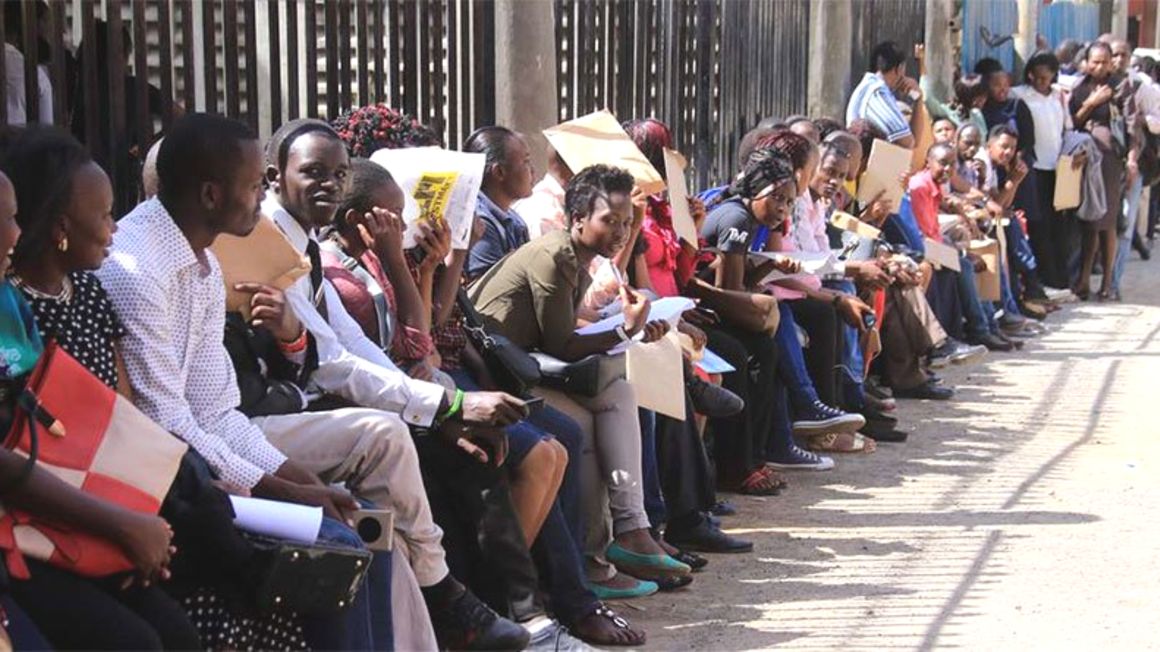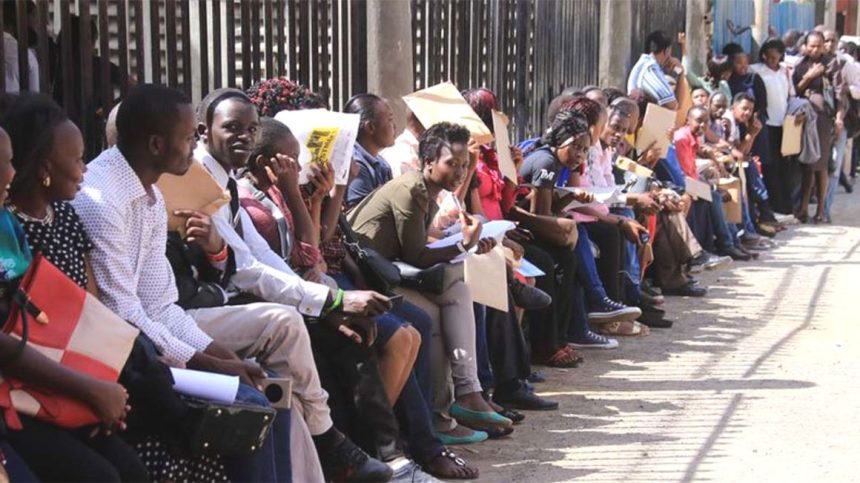The number of Kenyans without jobs increased to more than 2.97 million in the quarter to December, underscoring the labour market woes in the wake of elevated inflation and reduced activity in the dominant agricultural sector.
The number of jobless persons grew 2.94 percent from 2.89 million in September, according to Kenya National Bureau of Statistics (KNBS) data released on Monday, a pointer that the economy shed over 80,000 jobs in the three months after the August 9 General Elections.
Young people below the age of 29, mainly secondary school and college graduates, were the hardest hit by joblessness in an economic setting that is plagued by reduced hiring on the back of sluggish corporate earnings.
More than half of Kenyans without jobs or 1.54 million people were between 20 and 29 years, underlining the growing crisis of youth unemployment.

This is a major blow to jobseekers, especially the more than one million young people who graduate from colleges and secondary schools in search of low-cadre positions like clerks.
The jobs report was released days after Central Bank of Kenya Governor Patrick Njoroge said he expected the country’s economy to grow by 5.8 percent in 2023, trimming the forecast from an earlier figure of 6.1 percent because of a downward revision of the prospects for the agricultural sector.
Like other countries in the region, Kenya is emerging from a drought, the worst in four decades, that hit agriculture hard.
The Kenyan economy grew by an estimated 5.6 percent in 2022 compared to 7.5 percent a year earlier.
The unemployed persons consist of those who were actively looking for jobs and those who had despaired and quit searching for work, according to the KNBS.
“The combined rate of unemployment and potential labour force (LU3) [is] measured as either unavailable jobseekers or available potential jobseekers,” said KNBS.
“LU3 for the fourth quarter of 2022 was 13.9 percent compared to 13.3 percent recorded in the same quarter of 2021.”
The economic activity is estimated to have decelerated further in the fourth quarter after President William Ruto’s administration dropped consumption subsidies, which curbed inflation.
The price rises, partly fuelled by the war in Ukraine, have deepened economic problems triggered by the Covid-19 pandemic, including stagnant wages and growing youth unemployment.
Kenya’s inflation has since June breached the target range of 2.5-7.5 percent, prompting the CBK’s Monetary Policy Committee to raise benchmark interest rates to curb consumer spending.



